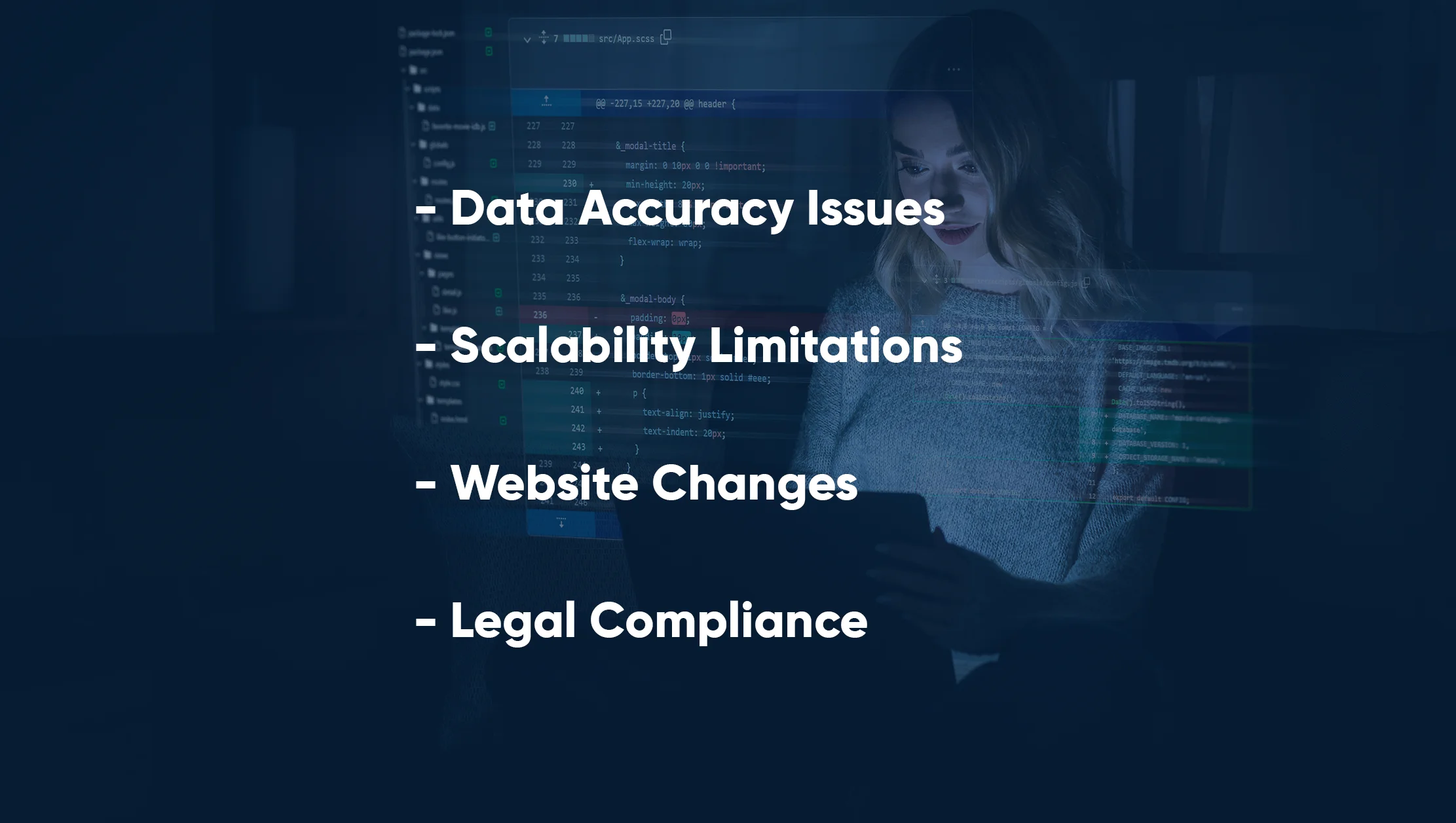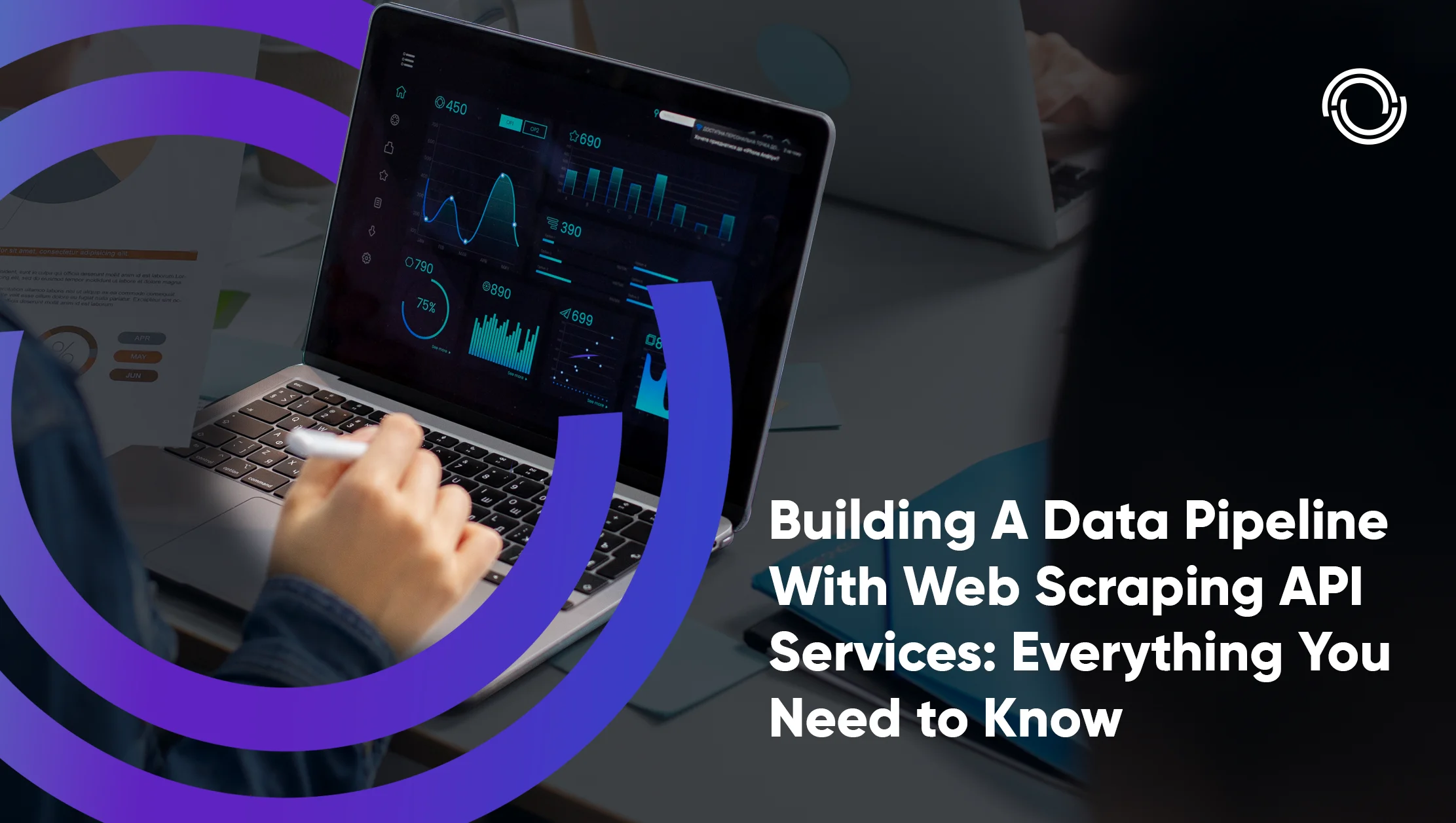Introduction
In today’s data-driven world, organizations rely on a continuous flow of structured, high-quality data to make informed business decisions. A robust data pipeline is the backbone of this process, enabling the smooth transfer of data from its source to storage and analysis systems.
However, building such a pipeline isn’t always straightforward. Raw data often comes from multiple online platforms, is scattered across different formats, and may be updated frequently. This is where Web Scraping API Services play a critical role—allowing businesses to automate, streamline, and scale their data collection process without getting bogged down by technical complexity.
In this blog, we’ll break down the essential steps, tools, and strategies to design a seamless data pipeline that drives real business value.
Understanding the Role of a Data Pipeline in Business Operations

A data pipeline serves as the backbone of modern business intelligence, ensuring that information flows seamlessly from multiple sources to a destination where it can be effectively used, whether that’s a data warehouse, an analytics dashboard, or a machine learning model. It’s essentially an end-to-end system that handles every step of the data journey, transforming raw inputs into actionable insights.
A typical data pipeline consists of the following key stages:
- Data Collection
This stage focuses on gathering raw data from diverse channels, including websites, APIs, IoT sensors, or internal enterprise systems. The accuracy and completeness of this stage directly influence the quality of insights generated later.
- Data Transformation
Once collected, the data must be cleaned, formatted, and standardized. This includes removing duplicates, correcting errors, and converting data into a consistent structure to ensure reliability across analytics tools and reporting systems.
- Data Storage
After transformation, the processed data is securely stored in a database, data lake, or cloud storage platform. This allows for easy retrieval, scalability, and long-term accessibility.
- Data Consumption
The final stage ensures that the refined data is readily available for decision-making. It can be used for reporting, advanced analytics, automation workflows, or feeding into AI/ML algorithms for predictive modeling.
When these processes are handled manually, businesses often face delays, inconsistent quality, and incomplete datasets, hindering timely decision-making. By integrating Web Scraping API Services into the pipeline, organizations can automate online data extraction, streamline workflows, and ensure a continuous, reliable flow of accurate, real-time information at scale.
Why Are APIs the Game-Changer for Automated Data Collection?

In the past, automated data collection primarily relied on traditional web scraping methods, which meant creating custom scripts, navigating unpredictable site structures, and constantly updating code to match ever-changing web elements. This process was time-consuming, resource-intensive, and prone to breaking whenever a site introduced even minor changes.
Today, APIs explicitly built for scraping have transformed this landscape. By offering predefined, ready-to-use endpoints, these solutions remove much of the technical complexity associated with HTML parsing and browser automation, making large-scale data acquisition faster and more reliable.
With Scraping API Integration, companies can seamlessly connect a single API to their existing data pipeline and begin retrieving structured, clean data immediately. This eliminates the need for manual maintenance while ensuring that datasets remain current, significantly reducing the risk of making decisions based on outdated or incomplete information.
Modern scraping APIs also come equipped with advanced capabilities, including:
- Automated IP Rotation: Dynamically changes IP addresses to bypass rate limits, avoid bans, and ensure uninterrupted data access.
- Built-in CAPTCHA Solving: Handles verification challenges automatically, removing one of the most common obstacles in large-scale scraping.
- Geo-Targeted Queries: Retrieves region-specific data for more accurate market insights, enabling businesses to tap into local trends and opportunities.
- Scalability Features: Enables rapid scaling of requests without compromising speed or data quality, making it ideal for projects that require millions of records.
By combining speed, scalability, and compliance, API-powered scraping ensures businesses always work with fresh, reliable, and market-relevant datasets.
Steps to Build an Efficient Data Pipeline
An efficient data pipeline does far more than gather information—it ensures accuracy, reliability, and seamless usability while supporting business goals. Building such a pipeline involves carefully planned stages that ensure data flows smoothly from extraction to actionable insights.
1. Identify Your Data Requirements

The first step is to define the scope and purpose of your data pipeline clearly. Knowing exactly which sources to extract from, what data formats are needed, and how frequently updates are required prevents unnecessary complexity later. This stage sets the foundation for efficiency and avoids wasted resources.
Key considerations:
- Determine the exact data sources relevant to your goals.
- Define the structure and format (JSON, CSV, XML, etc.).
- Decide on the frequency—real-time, hourly, or daily.
- Clarify the level of historical data needed.
2. Select the Right Tools

Choosing the right Web Scraping API is critical for efficiency and scalability. The right API removes the burden of maintaining in-house infrastructure, making data collection faster, more consistent, and more adaptable to growth.
Key considerations:
- Pick APIs with clear, well-organized documentation.
- Ensure support for multiple data formats.
- Check if the tool can automatically scale as needs grow.
- Verify reliability under high-demand scenarios.
3. Automate Data Ingestion

Automation ensures your pipeline operates without constant manual intervention. By using scheduling tools like cron jobs, cloud functions, or built-in API Scraping automation features, you maintain a continuous data flow into your system.
Key considerations:
- Set up automated triggers for ingestion.
- Use scheduling tools or built-in API scheduling features.
- Ensure ingestion workflows are resilient to downtime.
- Include error notifications for failed jobs.
4. Implement Data Transformation Logic

Raw data is rarely ready for immediate use—it often contains inconsistencies and redundancies. Applying transformation rules like deduplication, formatting normalization, and standard unit conversions ensures that all datasets are clean and analytics-ready.
Key considerations:
- Remove duplicate entries.
- Normalize date and time formats.
- Convert currencies and units into standard formats.
- Standardize text data for consistency.
5. Store Data in Scalable Infrastructure

Storage must not only meet your current needs but also support future growth. Cloud platforms such as AWS Redshift, Google BigQuery, or Azure Data Lake offer scalable capacity and powerful query performance for large datasets.
Key considerations:
- Choose storage that supports high-speed queries.
- Prioritize security and compliance features.
- Ensure easy integration with analytics tools.
- Plan for both current and future data loads.
6. Enable Real-Time Access

For industries like e-commerce, finance, and travel, decisions must be made instantly. Using a tool to Scrape Real-Time Data API ensures your data pipeline delivers updates as events happen, supporting faster, more informed actions.
Key considerations:
- Use APIs that support real-time updates.
- Ensure minimal latency between collection and access.
- Implement alerts for significant data changes.
- Optimize infrastructure for rapid processing.
7. Monitor and Maintain

Even the best-built pipelines need continuous oversight. Monitoring ensures that APIs remain accurate, transformation scripts run smoothly, and the overall system stays reliable over time.
Key considerations:
- Track API response accuracy.
- Log and review ingestion failures.
- Regularly test transformation logic.
- Maintain updated credentials and API keys.
Overcoming Common Challenges in Data Pipeline Development

Even with the numerous advantages of a well-designed data pipeline, the development process is not without obstacles. Businesses often encounter a set of recurring challenges that can hinder performance, accuracy, and long-term efficiency. Addressing these issues early is essential to ensure the pipeline remains reliable and scalable over time.
- Data Accuracy Issues
Inconsistent data formats, incomplete fields, or incorrect values can lead to inaccurate insights and flawed decision-making. Without proper validation and cleaning mechanisms, such issues can propagate through the entire pipeline, impacting analytics and reporting quality.
- Scalability Limitations
A pipeline that performs smoothly with smaller datasets may struggle or fail when processing large volumes of data. Inefficient architecture, lack of parallel processing, and inadequate infrastructure can lead to bottlenecks, delayed updates, or even complete system breakdowns under high load.
- Website Changes
When source websites update their structure, design, or content layout, existing scrapers can break, leading to interrupted data flow. This can result in downtime, missed information, and the need for urgent fixes to resume normal operations.
- Legal Compliance
Extracting and using web data must always align with data protection laws and platform-specific terms of service. Failure to comply with regulations such as GDPR or CCPA can result in legal penalties, reputational damage, and loss of trust from clients or stakeholders.
To address these challenges effectively, leveraging Web Scraping API Services provides a powerful solution. Such services come with pre-built, well-maintained scraping capabilities that adapt quickly to changes in website structures, handle data validation efficiently, support high scalability, and ensure compliance with relevant legal frameworks.
Best Practices for Maintaining a Reliable Data Flow

Ensuring a reliable data flow is essential for smooth operations, accurate insights, and long-term scalability. By applying structured processes and proactive measures, businesses can prevent disruptions, safeguard data integrity, and optimize performance.
Here are some best practices to follow:
- Start Small, Scale Fast: Begin with a small dataset to test your data pipeline’s functionality, identify potential bottlenecks, and fine-tune configurations. Once stability and accuracy are confirmed, gradually expand to handle full-scale operations without compromising performance.
- Use Error Logging: Maintain detailed logs that record every failure in data fetching, processing, or transformation. These logs serve as a quick diagnostic tool, enabling you to resolve issues promptly and prevent repeated errors.
- Implement Data Validation: Integrate automated checks to reject invalid, duplicate, or incomplete records before they are stored. This ensures only clean, accurate, and standardized data enters your systems, reducing the risk of flawed analysis.
- Secure Data Transfers: Encrypt all data in transit using secure protocols like HTTPS or SSL/TLS. This step is crucial to protect sensitive information from unauthorized access, especially when working with customer or financial data.
- Plan for API Downtime: Prepare backup strategies such as alternative data sources, cached datasets, or queued requests to maintain uninterrupted operations when APIs experience downtime.
By consistently following these best practices, you ensure your pipeline remains efficient, reliable, and compliant as your business expands and data demands increase.
How Web Fusion Data Can Help You?
We specialize in building intelligent, scalable pipelines powered by Web Scraping API Services that streamline the entire process, from data extraction to real-time delivery. Our approach ensures that you get high-quality, business-ready data without having to worry about technical complexities or system maintenance.
Here’s how we add value to your data operations:
- Customized Data Extraction Plans: We design extraction workflows aligned with your specific industry and data goals.
- Effortless System Integration: Our engineers ensure your existing infrastructure connects seamlessly with our APIs.
- Real-Time Data Accessibility: Get instant access to fresh, reliable datasets whenever your operations demand it.
- Enterprise-Grade Scalability: Handle high-volume data processing without compromising speed or accuracy.
- Dedicated Technical Support: Our team actively monitors and optimizes your pipeline for maximum uptime and performance.
Our team also ensures smooth deployment and continuous optimization through Scraping API Integration, helping you maintain a reliable and future-ready data ecosystem.
Conclusion
Building an effective data pipeline requires a structured approach that ensures accuracy, speed, and adaptability. By integrating Web Scraping API Services into your workflow, you can automate data collection, minimize manual effort, and ensure your business always works with the most relevant information.
We design tailored solutions powered by API Scraping to deliver consistent, scalable results. Contact Web Fusion Data today to discuss your project, explore integration options, and see how we can help you create a future-ready data pipeline that drives real growth.

